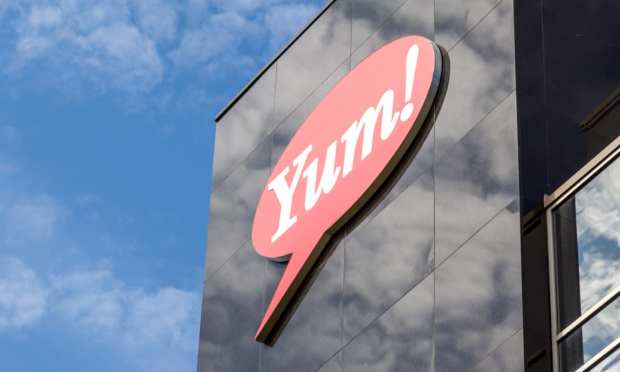QSRs Optimize With Machine Learning As Yum! Brands Acquires AI Company

As artificial intelligence (AI) capabilities progress, quick-service restaurants (QSRs) are using the technology to refine every step of the process, including marketing, menu offerings, operations, signage and more. Now, Yum! Brands, Inc. is taking control of its technology. The company, which owns KFC, Taco Bell, Pizza Hut and other multinational restaurant chains, announced on Tuesday (Mar. 4) that it will acquire AI analytics company Kvantum, Inc., which creates complex models of consumer behavior to provide marketing insights.
“Technology strategies that elevate the customer and employee experience and lead to smart, data-driven marketing decisions are critical to keeping our brands R.E.D. (relevant, easy to access and distinctive) and delivering growth for our franchisees and shareholders,” David Gibbs, Yum! Brands CEO, said in the company release. “We’re excited about the opportunity this acquisition presents, and the potential to scale Kvantum’s proven technologies across our system to strengthen our data and advanced analytics capabilities and elevate our world-class marketing competencies globally.”
Yum! Brands will pair Kvantum’s technology with the expertise of the strategists at Collider Lab, a marketing strategy consultancy that was acquired by the QSR giant in 2015, pairing the AI company’s in-depth analytics with the consultancy’s understanding of consumer behavior. Per the deal, which is expected to close by the end of the quarter, Kvantum will be permitted to continue its work with external clients, so long as they are not in the restaurant industry.
“We’re passionate about developing cutting-edge technology solutions based on advanced econometrics, Big Data and machine learning techniques that enable our clients to understand consumer behavior and optimize every dollar they spend on marketing and promotions,” said Kvantum CEO Shilpi Sharma in the release. “… We’re proud that our work has made Kvantum an attractive candidate for a transaction of this kind.”
This technological upgrade is hardly surprising for Yum! Brands, which emphasized its upcoming digital innovations on a call with analysts last month. In addition to these consumer insights technologies, Yum! Brands is also piloting new point-of-sale systems and using new digital tools to improve performance internally. One example is Pizza Hut’s new “HutSpot” app, an “intelligent coaching app” that can “improve shift-level store performance,” according to Gibbs. “After launching HutSpot and other process improvements in the U.K., delivery times improved over six minutes and drove a 20-point improvement in customer satisfaction scores,” he noted.
As AI advances QSRs’ marketing analytics and internal performance, many major restaurant chains are also using the technology to build out consumer-facing features. Some McDonald’s locations in Sweden, for example, have partnered with digital signage company Visual Art and tech solutions provider Binary Brains to create AI-powered drive-thru signs to adapt menus to incoming customers in real time.
The goals are to use the signs’ machine learning (ML) algorithms to “drive average check — both off-peak and peak hours — increase add-ons (without adding operational time in the kitchen), [and] activate the local data-driven customer meeting with locally adapted menus,” Visual Art CEO Anders Apelgren told Digital Signage Today. “…The algorithm was first trained for two months to show the best suitable and relevant offer throughout the day adapted to the local restaurant and its customer flows.”
Loyalty apps are also getting the AI upgrade, as QSRs utilize their insights to adapt offerings to consumers’ preferences. In January’s Order to Eat Tracker® done in collaboration with Paytronix, PYMNTS researchers explored how AI is unlocking data secrets to offer highly personalized rewards. Michelle Tempesta, head of product for Paytronix, said, “We see artificial intelligence as a way to drive individual action [IA], in what we call AI to IA. It’s using artificial intelligence to predict guest behavior, personalize touchpoints, and surprise and delight guests on- and off-premises. When AI to IA is applied to win back campaigns and other programs, we see a 25 percent increase in efficacy.”
